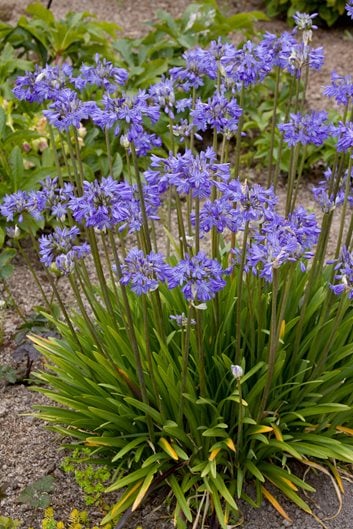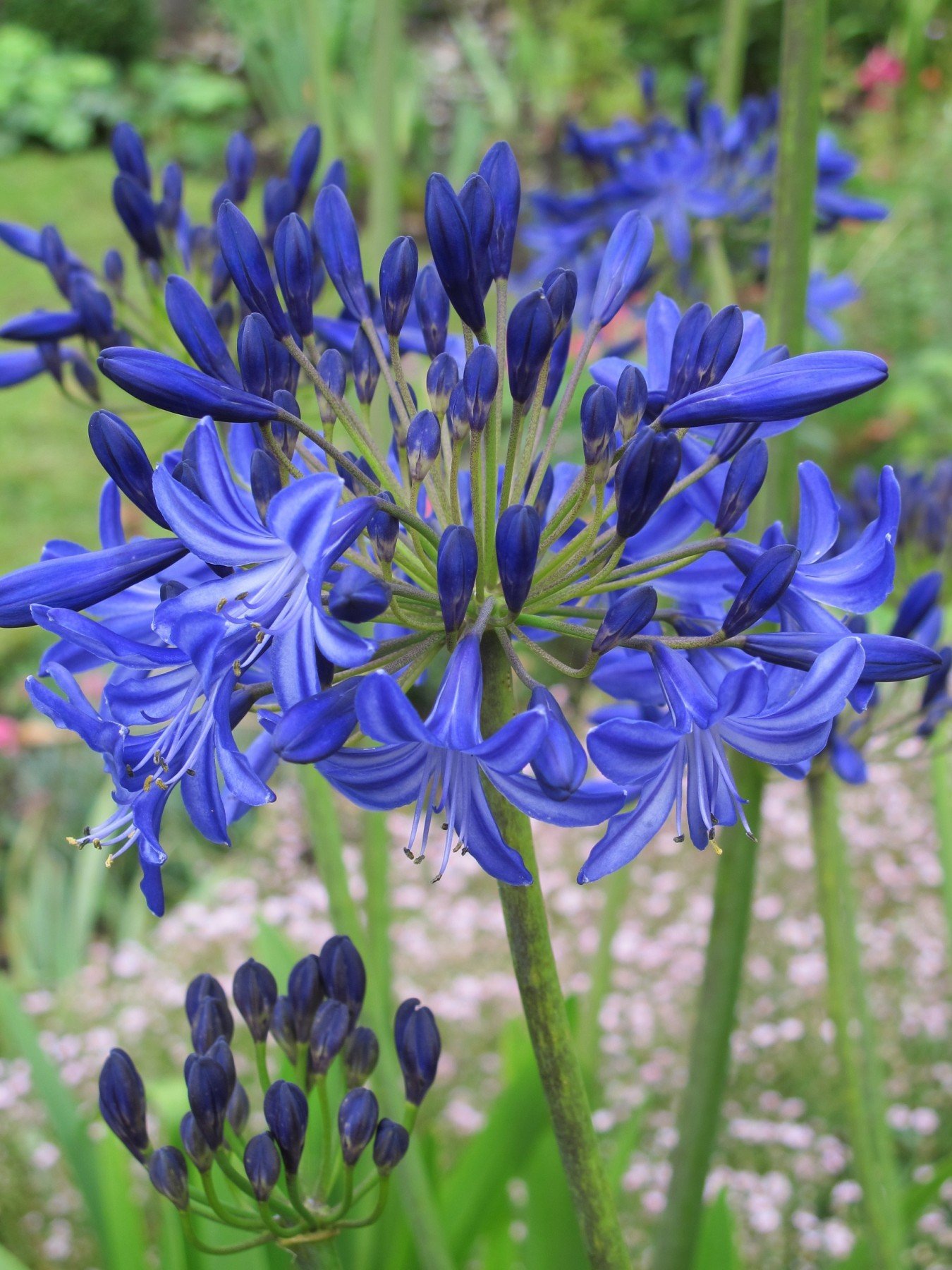Expanding Agapanthus: A Complete Overview to Beautiful Blooms
Expanding Agapanthus: A Complete Overview to Beautiful Blooms
Blog Article
Letting Loose the Secret to Successful Agapanthus Growing: Tips and Tricks for a Flourishing Yard
In the world of horticulture, growing agapanthus efficiently requires a tactical method that includes different elements of plant care. By understanding the subtleties of agapanthus cultivation, one can develop an atmosphere where these plants thrive and flower perfectly.
Planting Agapanthus: Best Practices
When planting Agapanthus, appropriate dirt prep work is necessary for making certain successful development and growth of these stunning blossoms. Agapanthus, commonly understood as Lily of the Nile or African lily, grows in well-draining soil with a somewhat acidic to neutral pH degree - Agapanthus. Prior to planting, it is crucial to modify heavy clay dirts with organic matter such as garden compost or peat moss to improve drain and give necessary nutrients for the plants
To grow Agapanthus, select an area that gets complete sunshine to partial shade, as this will certainly promote healthy development and abundant flowering. Dig an opening twice the size of the plant's root sphere and put the Agapanthus at the exact same deepness it was formerly growing. Carefully backfill the opening with soil, pushing down strongly to remove any kind of air pockets around the roots.
Water the freshly grown Agapanthus thoroughly and proceed to keep the dirt equally wet, particularly during the plant's active growing period. Agapanthus. Using a well balanced fertilizer once a month can even more support the plant's growth and flowering. By following these best methods for growing Agapanthus, you can create a magnificent display screen of these captivating blossoms in your garden
Suitable Dirt Conditions for Agapanthus
For optimum development and flowering success of Agapanthus plants, making certain the dirt problems are excellent is essential. Agapanthus prefers dirt that is rich in nutrients, so including a balanced plant food during the growing season can advertise healthy and balanced growth and vivid blossoms.

Watering and Feeding Tips
To guarantee healthy growth and vibrant blossoms, correct watering and fertilizing methods are necessary for successful Agapanthus cultivation. Agapanthus plants take advantage of normal watering, specifically during the growing season. It is advised to water deeply as soon as a week, making sure the soil is wet but not waterlogged. During hot weather condition or in pots, even more regular watering may be required to avoid the soil from drying out completely.
When it involves feeding Agapanthus, a well balanced fertilizer with equivalent parts nitrogen, phosphorus, and potassium can be used in the springtime to promote healthy development and blooming. Slow-release plant foods are suitable for giving nutrients gradually over an extended duration. Stay clear of over-fertilizing, as this can result in too much foliage growth at the cost of blossoms.
In addition, incorporating organic matter like compost into the dirt can boost nutrient degrees and boost dirt framework, helping in the general health and wellness of the Agapanthus plants. By following these watering and fertilizing ideas, gardeners can ensure their Agapanthus plants flourish and generate sensational displays of blossoms.
Trimming and Deadheading Methods
Correct trimming and deadheading techniques play an important role in keeping the health and aesthetic appeals of Agapanthus plants, matching the necessary techniques of watering and feeding for successful growing. Pruning Agapanthus includes eliminating invested blossom heads, dead or yellowing fallen leaves, and total shaping of the plant to promote much better growth. Deadheading, the procedure of eliminating faded find more info blossoms, not only boosts the plant's look but likewise encourages additional growing.
When deadheading Agapanthus, it is advisable to trim off the blossom stem at the base utilizing sharp, clean shears. This procedure reroutes the plant's energy from seed manufacturing back into origin and foliage growth, promoting a much healthier and much more durable plant. Normal deadheading can prolong the flowering period of Agapanthus and protect against self-seeding, which can lead to overcrowding.
In terms of trimming, Agapanthus usually benefits from a light trim after blossoming to clean the plant and motivate fresh growth. Reducing the invested flower stems and removing any type of dead or broken vegetation aids maintain the plant's vitality and total look. However, it is important to prevent reducing into the crown of the plant, as this can damage its wellness.

Protecting Agapanthus From Pests and Diseases
Carrying out effective insect and disease monitoring techniques is crucial to protecting the health and vitality of Agapanthus plants in cultivation. Agapanthus are normally durable plants, but they can still drop victim to numerous parasites and conditions otherwise effectively taken care of. One typical bug that impacts Agapanthus is the Agapanthus borer, a caterpillar that tunnels into the plant, causing damages to the blossoms and fallen leaves. To stop problems, normal examination of the plants is necessary. If borers are spotted, they can be by hand removed, or insecticidal soap can be utilized as a control measure.
In enhancement to parasites, Agapanthus are at risk to diseases such as origin rot and fungal fallen leave areas. By remaining alert and resolving parasite and illness issues without delay, gardeners can help their Agapanthus thrive and grow.

Verdict
To conclude, successful cultivation of agapanthus requires correct growing strategies, suitable dirt problems, appropriate watering and feeding, routine trimming and deadheading, and security from pests and illness. By following these methods and tips, gardeners can make certain a flourishing yard loaded with stunning agapanthus flowers. Agapanthus. Remember to preserve consistent care and focus to detail to advertise the wellness and durability YOURURL.com of these sensational plants
When growing Agapanthus, appropriate soil preparation is essential for making certain effective development and advancement of these beautiful flowers.Water the freshly grown Agapanthus thoroughly and continue to maintain the dirt evenly moist, particularly throughout the plant's energetic expanding period.For ideal growth and growing success of Agapanthus plants, ensuring the dirt problems are optimal is essential. When planting or transplanting Agapanthus, make certain the dirt is well-prepared to provide the required foundation for the plants to establish themselves successfully. One common pest that influences Agapanthus is the Agapanthus borer, a caterpillar that passages into read what he said the plant, triggering damage to the leaves and flowers.
Report this page